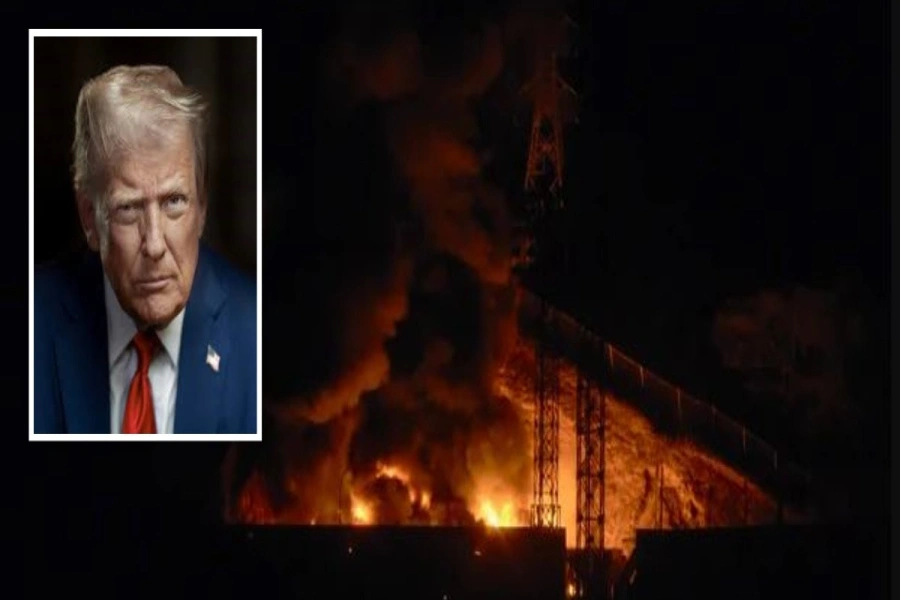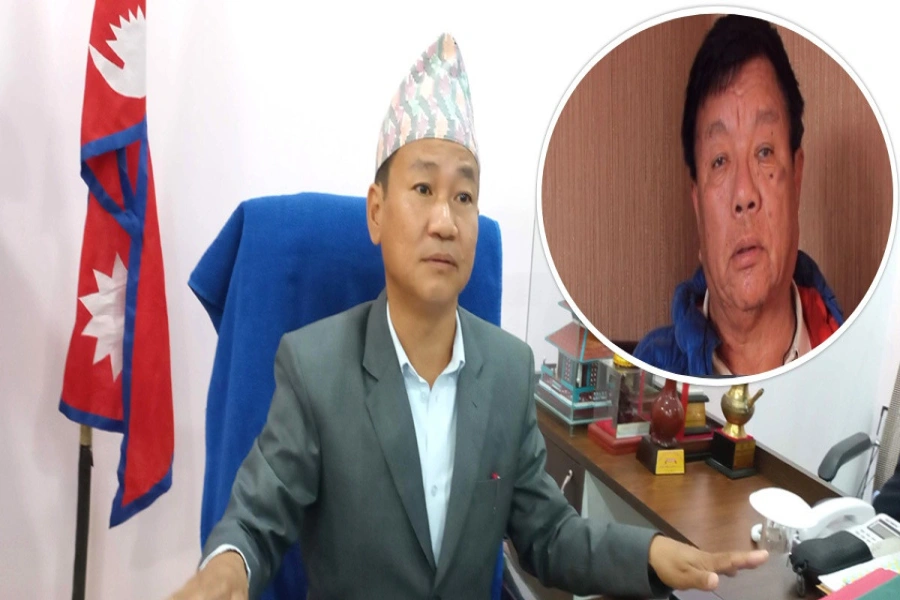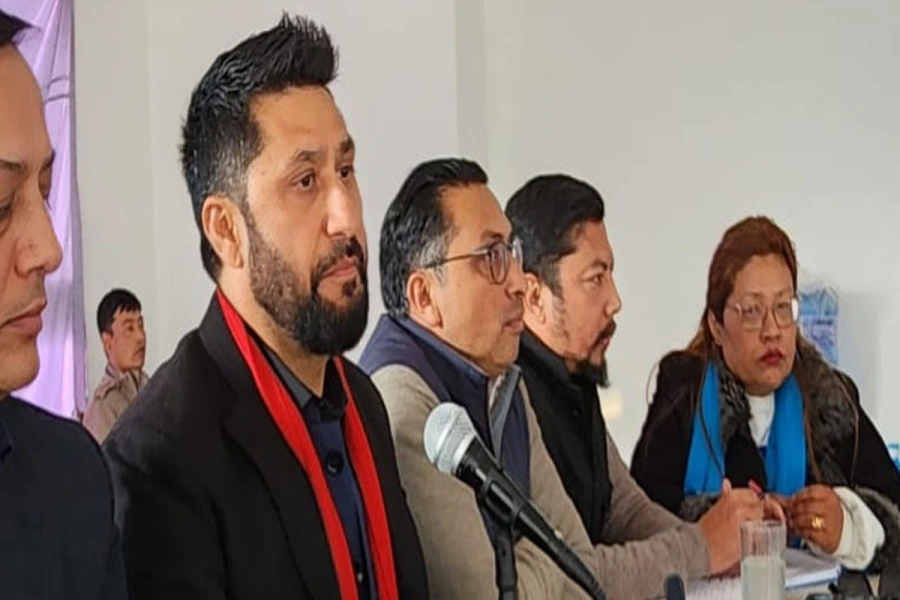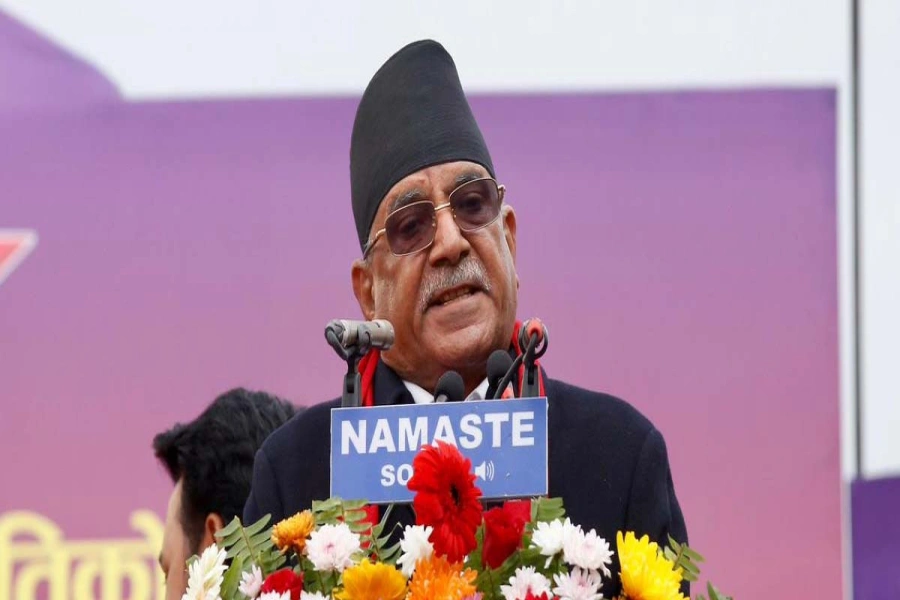Whether a person is seeking an adrenaline-rushing adventure or finding peace through tranquil nature, Nepal is the perfect destination. Home to breathtaking mountain ranges, including Mt. Everest, the country offers diverse cultures among various ethnic groups and religions coexisting harmoniously. Nepali people are also renowned for their warm hospitality and friendly nature. The country leaves a lasting impression on any visitor since opening its borders to foreigners in the 1950s.
Currently, Nepal is facing several economic challenges. With a continuous rise in imports but decreasing internal production, the country is witnessing high inflation. Tighter monetary policies, higher international prices, and the continuation of import restriction measures show that Nepal's economy grew at a slower pace in the first half of the current fiscal year.
According to the National Statistics Office (NSO), the country's economy grew by a meager 0.8 percent in the first quarter of the fiscal year 2022/23. Similarly, the Asian Development Bank (ADB) has estimated Nepal's economy to grow by 4.1 percent in the current fiscal year, lower than the earlier estimation of 5.8 percent, while the World Bank (WB) has also projected the country's economic growth to stand at 4.1 percent in the current fiscal year.
Major Contributor of National Economy
The tourism sector is one of the major contributors to Nepal's economy. According to a 2022 report by the World Bank, the tourism industry contributed about 6.7 percent to Nepal's GDP, while its total impact was US$2.2 billion.
Earlier, the COVID-19 pandemic brought the flourishing tourism sector down in the dumps. Fortunately, the tourism sector is bouncing back on its feet with an increase in the number of tourists. Nepal recorded 227,755 foreign tourists in the first three months of 2023.
In March 2023 alone, 99,426 foreigners came to Nepal on tourist visas via the air route, according to data from the Nepal Tourism Board (NTB). This is the highest monthly arrival record since the impact of the pandemic in early 2020.
The recovery of the tourism sector also means that the foreign exchange reserve is filling up the coffer. Economist Keshav Acharya said that the foreign currency earned through tourism helps support the country's balance of payments and fund imports of goods and services.
"The tourists who visit Nepal do not only come to Kathmandu. They go and explore Pokhara, Ghale ghau, Lumbini, Sagarmatha National Park, and many other places across the country. Their expenditure does not only help in the country's foreign currency reserve but also assists in income redistribution," said Acharya.
According to Acharya, the tourism industry in Nepal provides employment opportunities for thousands of people, including those in the hospitality, transportation, and tour guide sectors. "This also solves the unemployment problem in Nepal," he said.
Similarly, Niraj Bohara, Deputy General Manager of Suvidha Sewa Pvt. Ltd, a Staffing and Recruitment Company, said, "Owing to tourism being a labor-intensive industry, the value of human capital has been strongly emphasized, as seen in the production of more than 1.05 million jobs in the country as of 2022."
Kerala Tourism’s first STREET project inaugurated in Maravanthu...

As the tourism industry continues to grow, it can provide direct employment (employment opportunities in the hospitality industry, transportation, travel agencies, and tourist guide services), indirect employment (employment opportunities in sectors such as agriculture, manufacturing, and handicrafts), encourage entrepreneurship by creating a market for locally made products, boost local economies, and generate revenue for the government, Bohora mentioned.
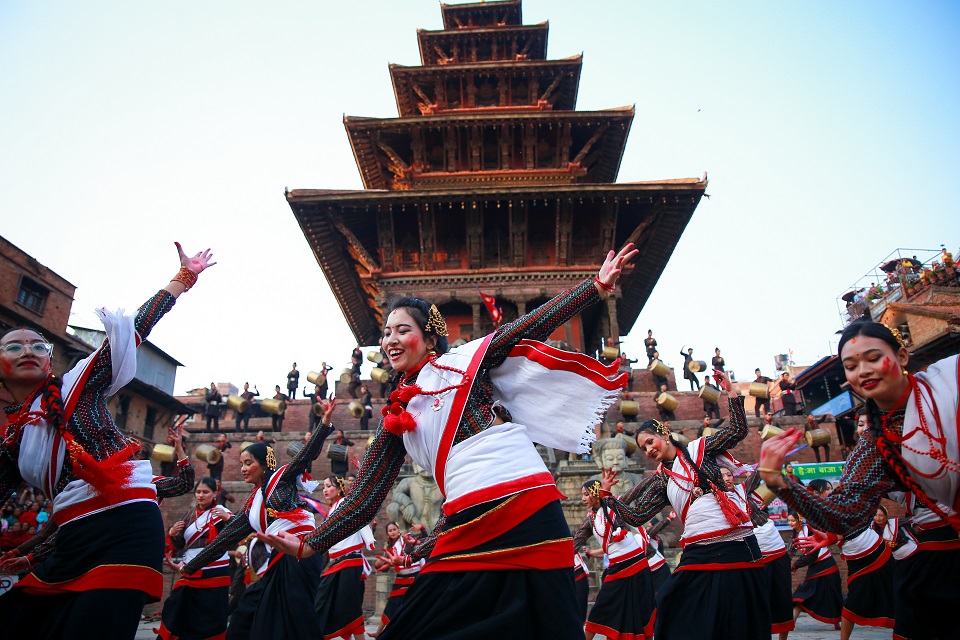
Booming investment in hospitality sector
The number of hotels is significantly increasing at present. According to Department of Tourism, a total of 15 well-equipped hotels have been registered from April 2022 to February 2023.In the last 11 months, 12 new star hotels and three new resorts have come into operation.
Not only this, there has been a wave of opening international famous 'chain hotels' in Nepal.Currently, the number of five-star hotels has reached 17, while the number of five-star hotels under construction is around one and a half dozen. Within five years, there will be at least 34 five-star hotels in Nepal. Most of the star hotels that are being built now have started bringing in world-famous brands as managers.
The first vice president of Hotel Association Nepal (HAN), the umbrella organization of hoteliers, Binayak Shah said that the entry of foreign chain hotels into Nepal is creating free publicity around the world."Customers of world-renowned brands prefer to stay in hotels of the same brand no matter what country they go to," said Vice President Shah, "Arrival of such hotel chains in Nepal should be taken positively."
Some of the international chain hotels of Nepal are Kathmandu Marriott Hotel, Hyatt Palace, Vibhanta Kathmandu, Hyatt Regency Hotel, among others. Hilton Double Tree, Sheraton, Dusit Thani Resort, Dusit Princess, Forest Inn are some of the international hotels that are currently under construction.
Not only there has been increase in number of hotels, but bookings in the hotels have also increased gradually. The months of March, April and May are considered the start of the tourist season in Nepal. The number of hotel bookings by foreign tourists has increased with the start of the tourist season, said Gopal Pangeni, the owner of the four-star hotel Ramada Encore in Thamel. He said that 70 percent of rooms in his hotel with 92 rooms, was booked for March and 90 percent for April and May.
Tourism potential in Nepal
With a rich cultural heritage, stunning natural beauty, and a wide range of adventure activities, Nepal is an excellent destination for a variety of tourism activities. Adventure tourism and religious tourism are most popular form of tourism while the country is slowly giving its attention to medicinal tourism as well.
According to Dinesh Maharjan, Director of High Ground Adventure Nepal, adventure tourism is a significant contributor to Nepal's economy. “In Pokhara, the adventure tourism is going quite well. Among all the tourists that come for zipline, bunjee jumping and other adventurous sports in our company, 60 percent are international tourists and remaining are domestic tourists.”
According to Economic Survey, among the tourists who entered Nepal in 2021, 66.8 percent visited Nepal for vacation, entertainment, travel, 10.3 percent for mountain climbing / adventure travel / hiking, 7.4 percent for pilgrimage and 15.5 percent for various other purposes. Based on the purpose of travel, in the last 10 years, the proportion of tourists coming for the purpose of vacation, entertainment, travel, trekking, mountain climbing and pilgrimage has been the highest.
Similarly, Shiva Adhikari, president of Nepal Association of Rafting Agencies (NARA) also claimed that the adventurous sport of Nepal are worthy for international attention. “Our rivers have great potential to attract international tourists. But, at present, we are not able to do so as the number of tourists coming for rafting has decreased after post pandemic.”
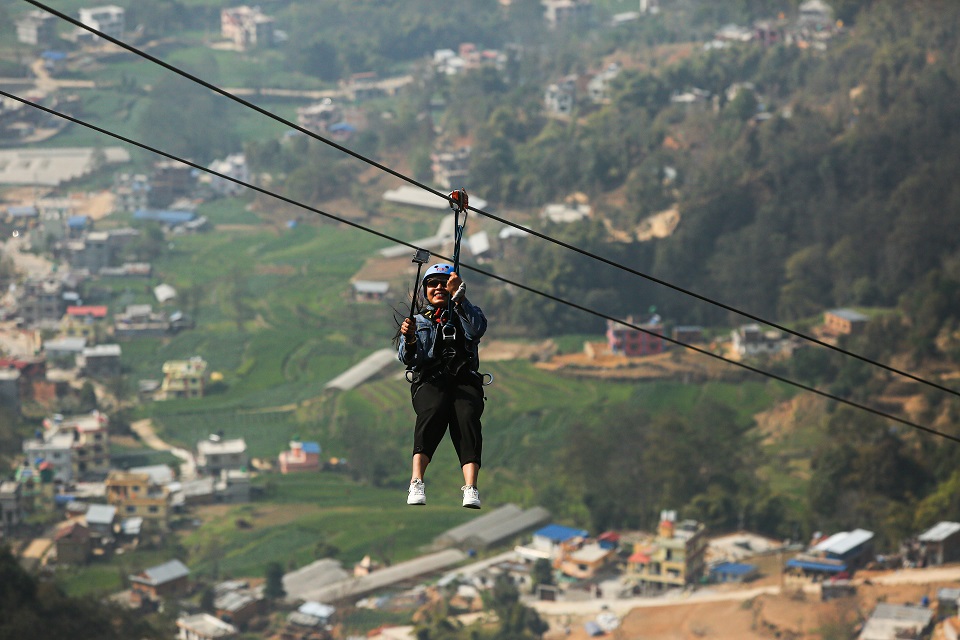
Challenges of tourism sector
In 2019, the total number of tourist arrivals increased by 2.1% to 1,197,191. However, due to the COVID-19 pandemic, the total number of tourist arrivals in 2020 was limited to 230,085, which was 81.0% less than the corresponding period of the previous year. In addition, this number decreased by 34.3% to 150,962 in 2021, the lowest since 1977. Fortunately, more than 600,000 tourists visited Nepal in 2022 with the declining number of COVID-19 cases in the country. However, Nepal still has to overcome many hardships to bring tourism back on track.
Dinesh Maharjan, Director of High Ground Adventure Nepal, mentioned that the recent plane crashes in Nepal have sent a negative message to the world. "The immediate aftermath of the Yeti plane crash led to flight cancellations, disrupting travel plans for tourists and resulting in revenue losses for the aviation and tourism sectors," he said. Similarly, while infrastructure for adventurous tourism such as bungee jumping and ziplining is increasing, activities such as rafting and paragliding are decreasing due to various reasons.
According to Shiva Adhikari, President of NARA, tourist attractions in the rivers have decreased due to crusher operators and contractors using excavators to remove gravel and sand from the river. "Earthquakes and aftershocks left expensive hotels and resorts deserted, and later COVID-19 infection made it a total zero. Now, while tourists are gradually coming to the country, river extractions have decreased the number of tourists coming for rafting," he said.
After the Pokhara Regional International Airport (PRIA) came into operation, commercial paragliding that had been taking place in the sky of Sarangkot was transferred to Mandre Dhunga, about five kilometers west of Sarangkot. "Pilots who have been paragliding for a long time are now unemployed. Some of the pilots we know have already gone abroad while some are learning foreign languages," said one of the tandem pilots of paragliding.
Meanwhile, tourism entrepreneurs who have invested in hotels and other tourism infrastructures say that although they have invested their capital, they will not receive returns on their investment due to COVID-19. They now have to pay interest to the banks and financial institutions, resulting in another problem for them. Achyut Guragain, Immediate Past President of Nepal Association of Tour & Travel Agents (NATTA), mentioned that while the private sector has contributed a lot to tourism, after the pandemic, they were unable to pay their loans on time, resulting in banks and financial institutions seizing their land and homes. "Tourism entrepreneurs are facing a lot of trouble due to these kinds of problems. How can tourism gain a momentum when hotel operators are facing such problems?" lamented Guragain.
Climate change is another major challenge for Nepal's tourism. Nepal's natural environment is under threat from a variety of challenges, including deforestation, soil erosion, and climate change. As visitors are attracted to Nepal's natural beauty, these challenges have the potential to impact the country's tourism industry.
Likewise, Economist Dipendra Bahadur Chhetri claimed that NTB's decision to require foreign tourists in Nepal to go on a trek only with a guide through a trekking company has a negative impact. "Instead of providing proper security to the tourists, closing the Free Individual Trekker (FIT) will have a negative view among tourists," he said. However, according to NTB, this decision was made to guarantee the safety of tourists during trekking in Nepal's adventure destinations. In this way, both tourists and guides will be insured.
Possible Solutions
To tackle the challenges faced by Nepal's tourism industry, a number of solutions can be implemented such as improving roads, airports, and accommodation facilities, as well as diversifying its tourism products. Economist Keshav Acharya suggests that instead of focusing on the number of tourists, Nepal should focus on attracting quality tourists, like Bhutan, where it is mandatory for tourists to spend USD 200 per day. Increasing the average length of stay of tourists can also help.
Tourism entrepreneurs believe that the government should implement proper plans and policies to promote Nepal as a perfect travel destination in the international market. Former President of NATTA, Guragain, proposes that the government should decrease the interest rate to 10-11 percent from 16 percent, which would give respite to tourism entrepreneurs and encourage them to work and invest in bringing more tourists to Nepal.
Increasing connectivity with other countries is equally crucial. Utilizing the Pokhara Regional International Airport and Gautam Buddha International Airport to the fullest and increasing flights to various countries are ways to achieve this, argues tourism entrepreneur Binayak Shah. Situated between two of the largest countries in the world, India and China, Nepal has an obvious advantage. Shiva Adhikari, president of the Nepal Association of Rafting Agencies, suggests that instead of investing in building towers, the government should focus on bringing tourists from India, China, and other countries to help Nepal's tourism flourish.
Conclusion
The Nepali tourism industry is currently facing both prospects and challenges as it is on the path of recovery with fall of COVID-19 pandemic. The number of tourists is increasing, and international celebrities and popular vloggers have been visiting Nepal as well. Bloggers such as Harald Baldr, Sam and Audrey, Kara and Nate, Mike Corey, Madina Ash, and Mike Wiens have encouraged their viewers to visit Nepal. Bollywood actors and singers such as Vivek Obroi, Tammana Bhatia, Honey Singh, and King have also visited Nepal. Famous Netflix series 'Vikings Valhalla' actress Frida Gustavsson also came to Nepal for her vacation. Needless to say, their visits have helped to publicize Nepal in the global market.
With the gradual return of tourists and the efforts of the government and tourism entrepreneurs, it is expected that the tourism industry will bounce back again. Focusing on promoting quality tourism, improving infrastructure, diversifying tourism products, and increasing connectivity with other countries can significantly help in attracting more tourists to Nepal. It is a good sign that despite the challenges, the industry has been able to showcase Nepal's beauty and potential as a travel destination in the international market. With continued efforts, the future of Nepali tourism looks bright.







